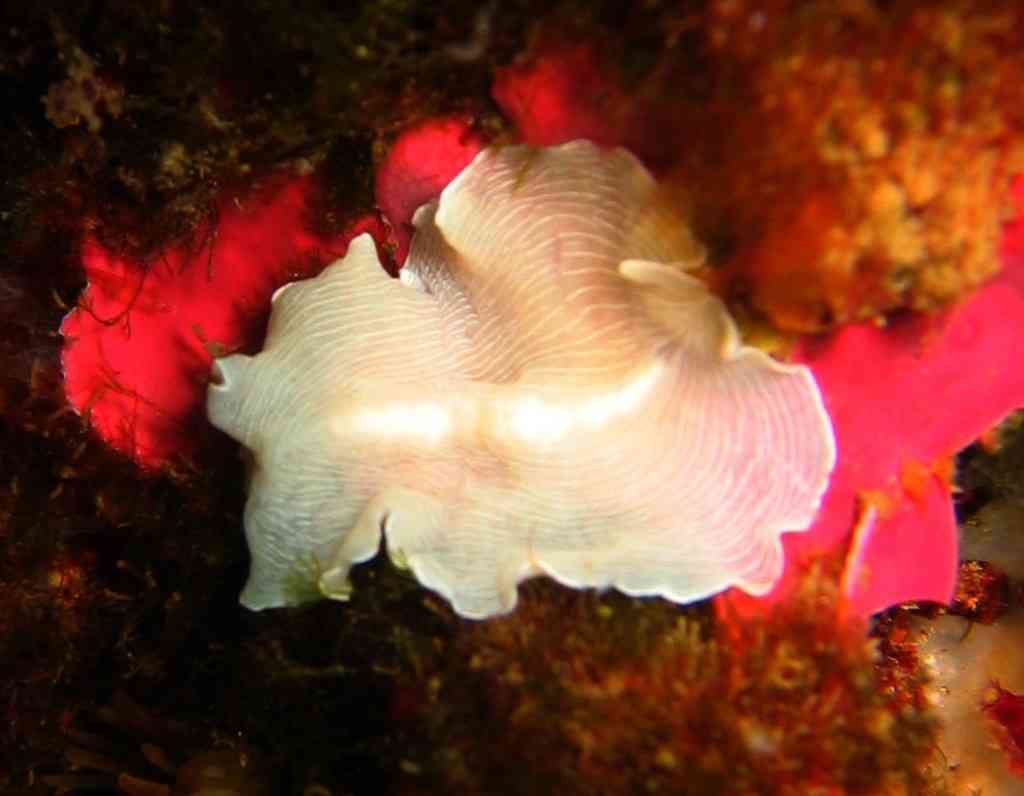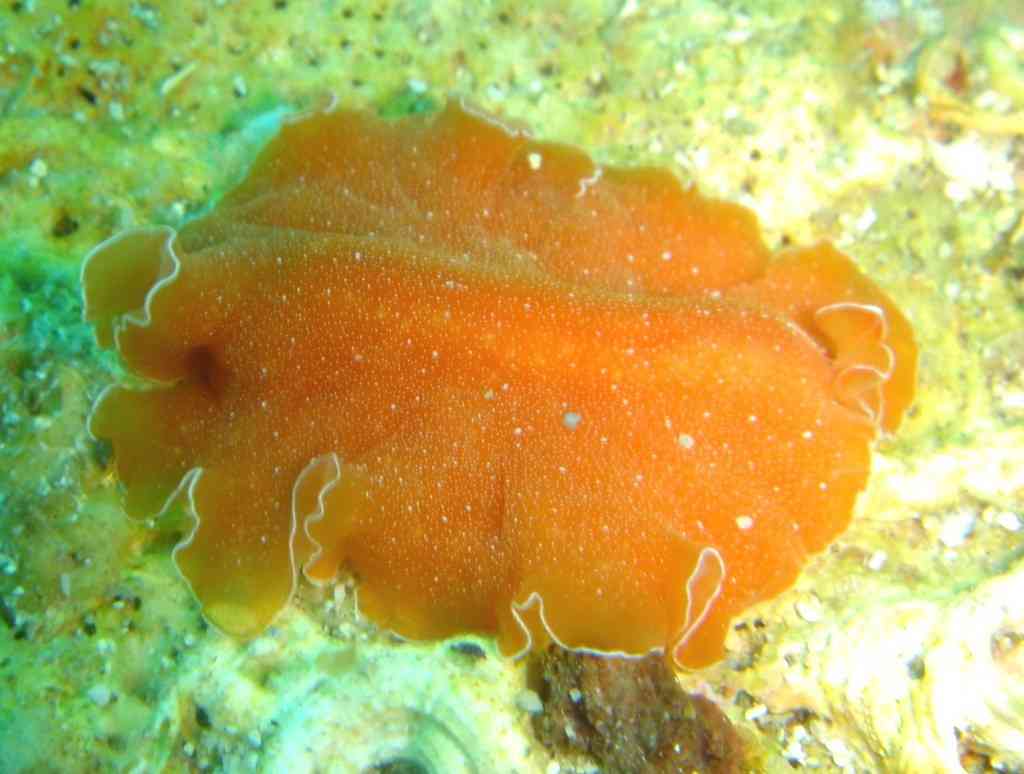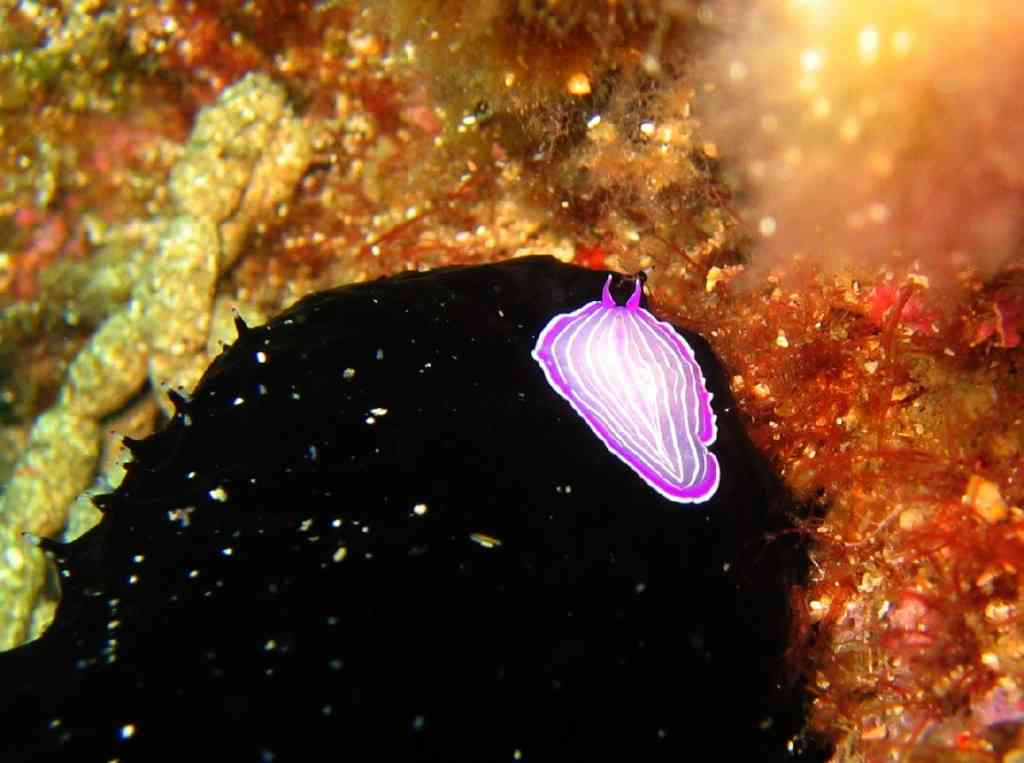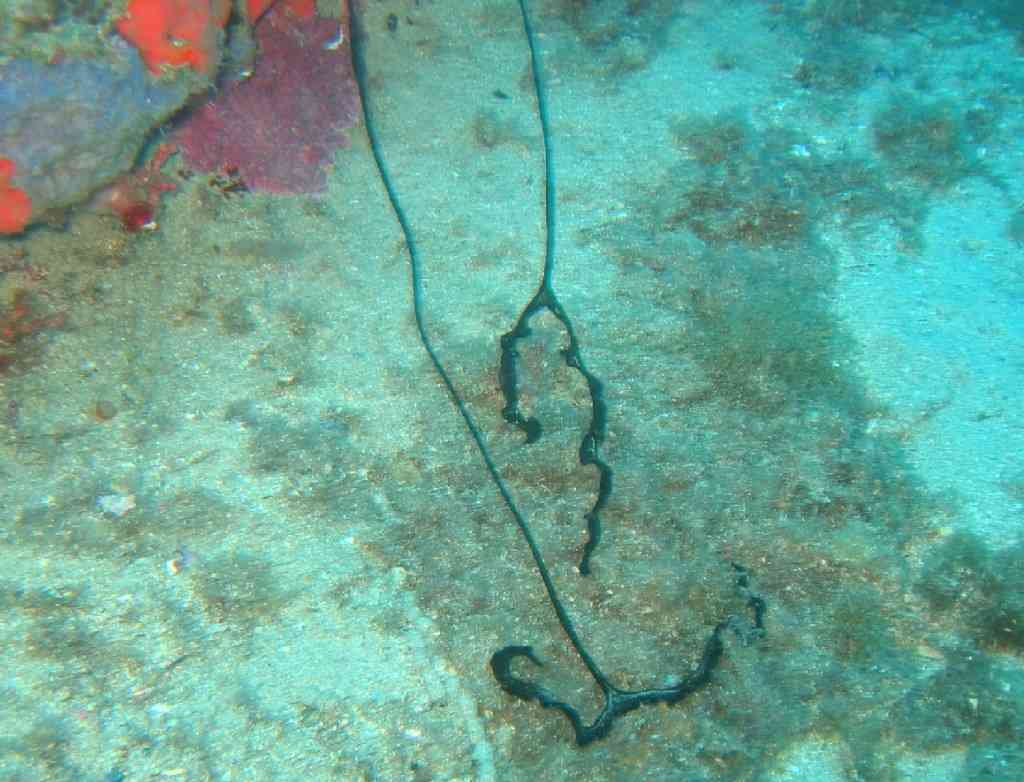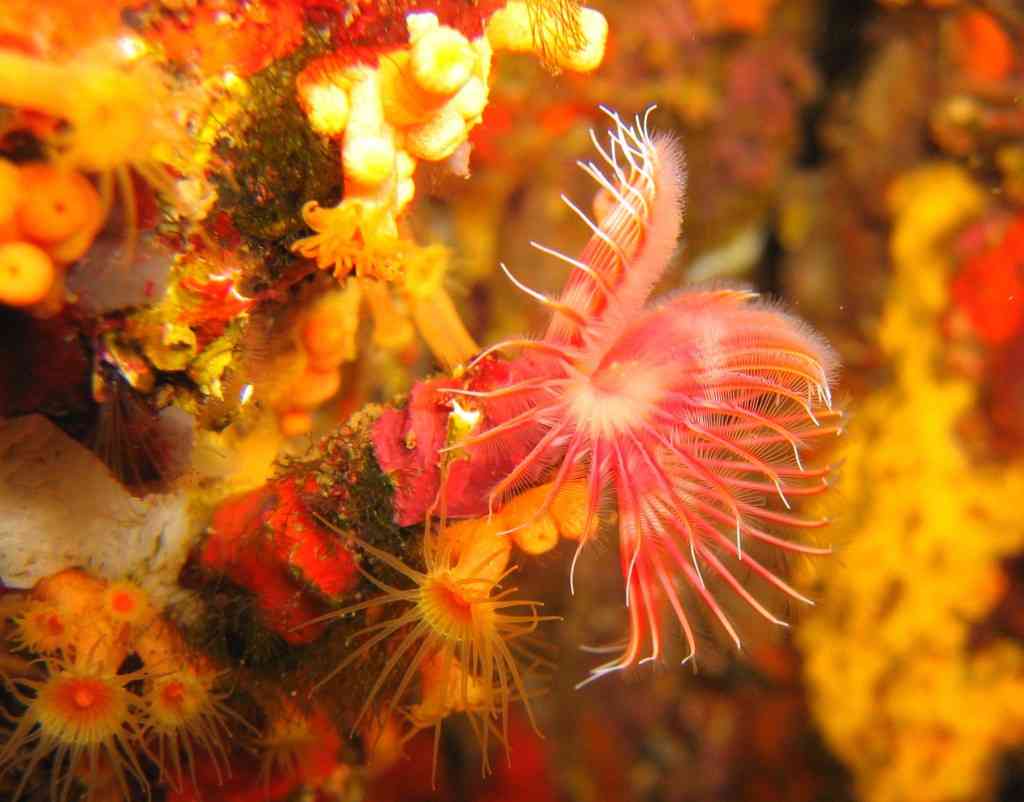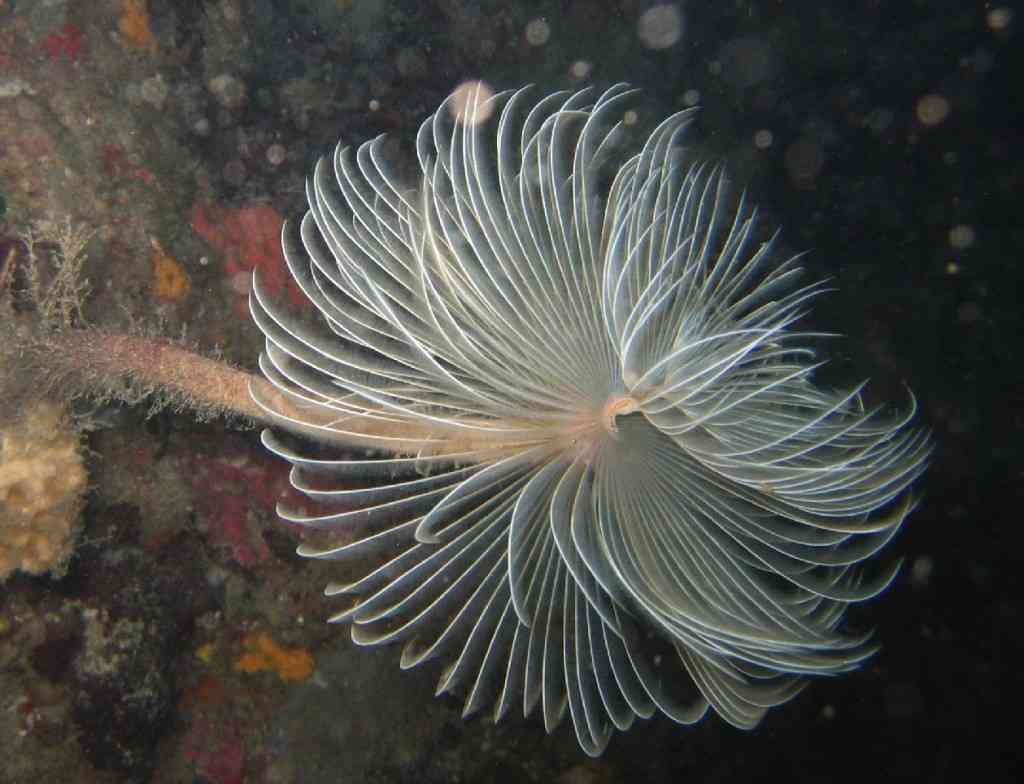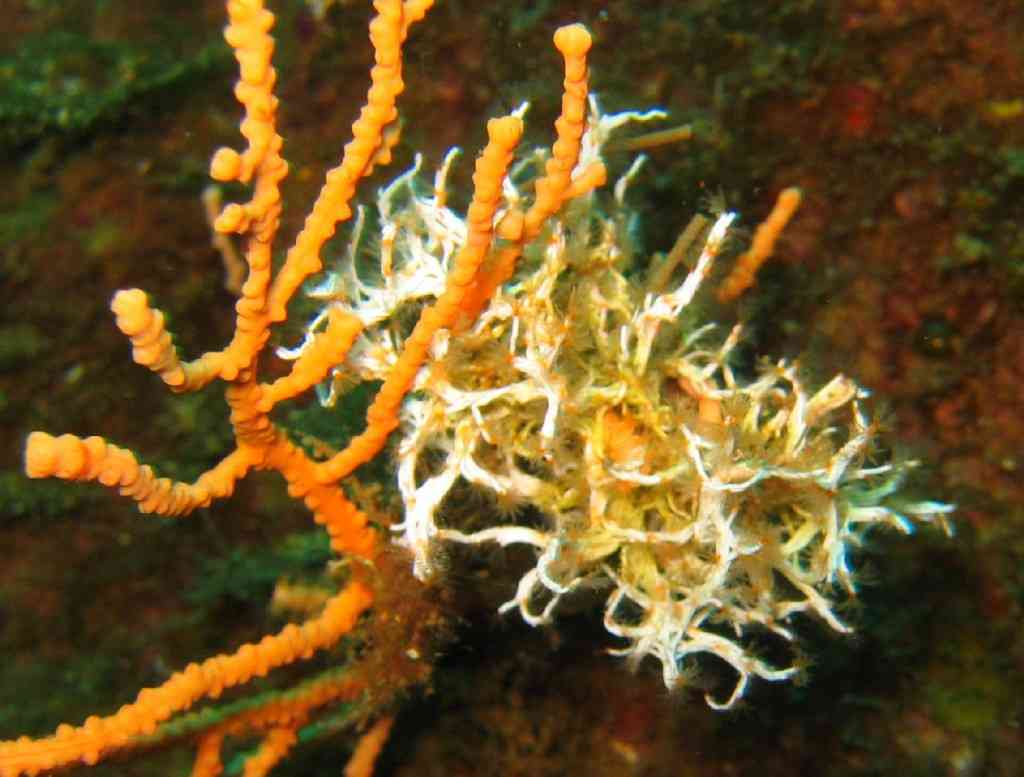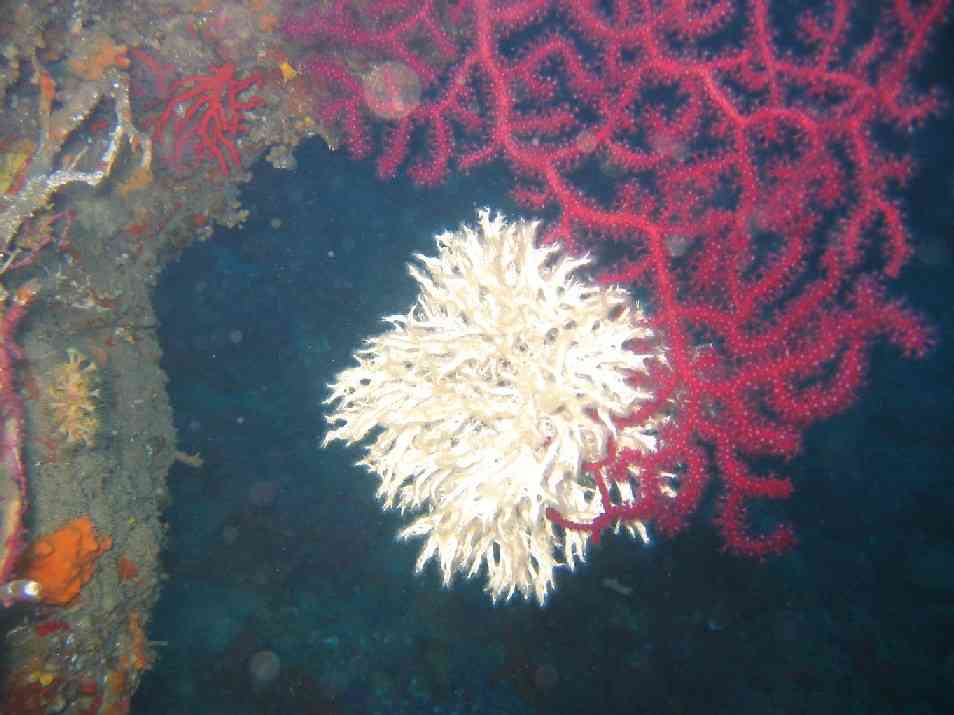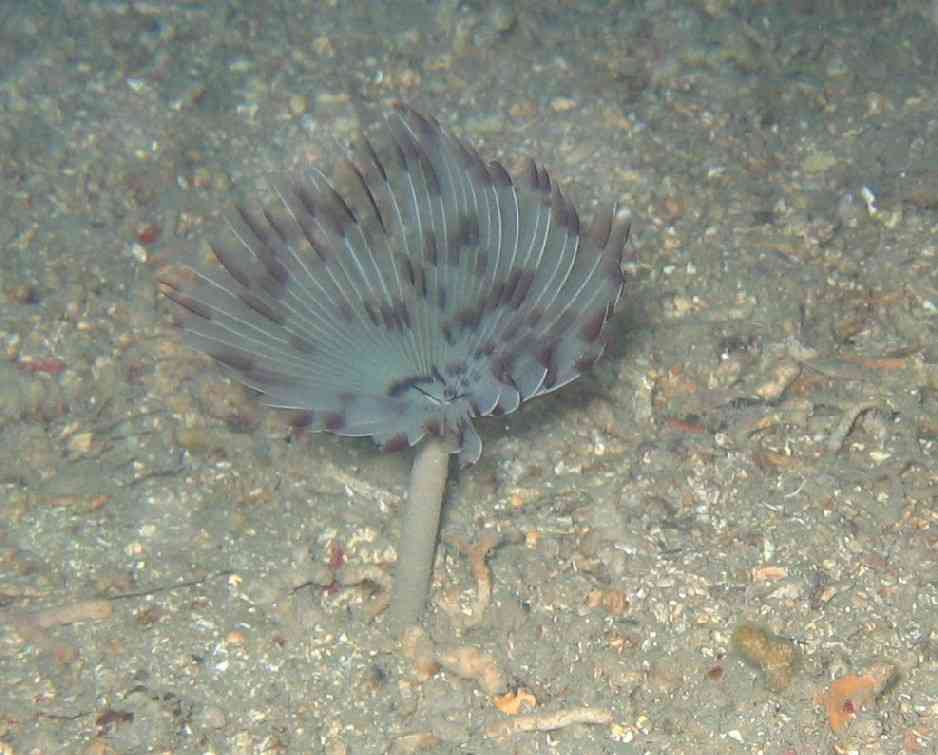The Worms
The Annelids, in particular the polychaetes (many hairs) with Spirographus_spallanzani (Our spectacular Spirograph) represent the flagship branch of these vermiform species for the wildlife and Flora Observer diver.
Number :
14360 (polychaetes: 10000 species, 47 families, 17 orders).
Description :
Flexible and contractile body, segmented (identical rings, metameres), which can be very elongated (max 20 to 30 meters: Lineus_longissimus), cylindrical, bilaterally symmetric, composed of three parts: unsegmented head or Prostonium (palpated, eyes with crystalline and retina, jaw), trunk (very segmented) and such with Cirri (Pygidium). Only Protostomien with a closed circulatory system. Respiration (in the polychaetes) through lateral pallets (capillaries) wearing hard bristles (fire worm: Danger!) on each segment (the antipodes), lateral gills in others. Pair of cérébroïdes nerve glands followed by lymph nodes in each segment (ventral nerve chain of the Hyponeurien type). Rigid chitinous bristles. Nephridia in each segment.
Ecology :
Marine, terrestrial and freshwater forms. Swimmers, tubeworms or benthic burrowing. Some species move with their parasites (wandering polychaetes) and others live in tubes that they secreted (the sedentary ones).
Criteria of recognition:
Elongated shape, rings. Limestone Tubes (Serpules) with or without a cap or fine sand grains (Sabella_alveolata – Hermelle) or mucosal (Spirorbe).
Sometimes made of coarse grains of sand agglutinated (nice, ' little palm ', beaches).
Remarks :
The Bonellie (Echiuriens Group) is close to the annelids by the biologists. Métamérisation not obvious at adult stage but its trochophore larva is typical of annelids, spiral-type segmentation with chitinous bristles.
The Oligocètes (' Little hair ', earthworm or earthworm) and buy them (' No hair ', leeches, freshwater or terrestrial) do not really concern the divers.
Trophic relations : Nbrx predators, eat small animals or microphages filterers.
Reproduction:
External sexual Gonochorique in the polychaetes, hermaphrodite in the oligochaetes and buy them.
Épitoque form: In some species and in function of sex, profound somatic transformations of the lower half of the body at sexual maturity. Nereis_diversicolor, Eunice_veridis Or Paralolo, consumed by the Pacific natives. Eggs are usually laid in water. Characteristic spiral Division. Gastrula which is transformed into a non-segmented trochophore larva (shaped as a spinner with a feather). A metamorphosis follows the larval life with the appearance of many metameres.
Asexual Reproduction by fission very important in some species.
Regeneration sometimes surprising according to the position of the section: possibility to regenerate a head in place of the tail!
Evolution :
Important Innovations: The segmentation of the body, a circulatory system without real heart and a better functional differentiation of the organs allow to give the annelids a place at mid-height in the tree-Nice.

